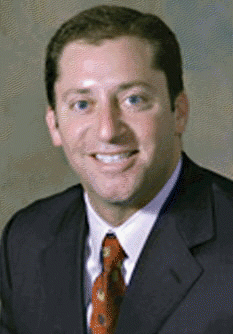 I have been very impressed by the approach of Ventus Medical, the makers of the PROVENT, to perform research to understand why and in whom the device works well before they rush it out and just start selling it. This will be critical in helping providers understand to whom they should prescribe the devices as well as helping to support third-party reimbursement.
I have been very impressed by the approach of Ventus Medical, the makers of the PROVENT, to perform research to understand why and in whom the device works well before they rush it out and just start selling it. This will be critical in helping providers understand to whom they should prescribe the devices as well as helping to support third-party reimbursement.Explore This Issue
August 2009-Eric J. Kezirian, MD, MPH
Recent results of pooled data from two trials that examined the efficacy of PROVENT therapy showed that the therapy was effective in 72% of 58 patients, as measured by achieving an apnea-hypopnea index (AHI) of ≤10 or AHI improved by at least 50% (Westbrook et al. Success rates of nasal expiratory positive airway pressure [nEPAP] via expiratory resistive load for the treatment of obstructive sleep apnea. Abstract 0570. Sleep 2009, Seattle, WA).
According to Dr. Westbrook, these results are comparable with those obtained through surgery or oral appliances, but without the upfront costs. But a key question is compliance. Will patients use this device?
Like CPAP, you have to get used to it, said Dr. Westbrook. There is an acclimatization that must take place to get used to it, usually one to seven days for most patients.
Data from a small 30-day study of 28 patients who used PROVENT therapy suggest good compliance, according to Dr. Westbrook. In that study (Colrain IM et al. J Clin Sleep Med 2008;4:426-33), 94% of the patients used PROVENT therapy throughout the night.
Dr. Westbrook emphasized that more accurate data on compliance will emerge with results of an ongoing longer-term trial that includes 250 patients randomized to EPAP (PROVENT therapy) or sham EPAP. But he suspects that compliance will be very good, based on the portability and simplicity of the device. You can carry a month’s supply in your pocket, it is disposable, and it doesn’t require an outlet, tubes, or a mask, he emphasized.
 I may not recommend [EPAP] for every night, but it may be a good alternative, for example, for patients who are on hunting or fishing trips where there is no electricity.
I may not recommend [EPAP] for every night, but it may be a good alternative, for example, for patients who are on hunting or fishing trips where there is no electricity.
-Pell Ann Wardrop, MD
For Pell Ann Wardrop, MD, Chair of the Sleep Disorders Committee of the American Academy of Otolaryngology-Head and Neck Surgery, the portability of this device makes it an attractive alternative, particularly in specific situations. I may not recommend it for every night, but it may be a good alternative, for example, for patients who are on hunting or fishing trips where there is no electricity, she said.
Leave a Reply